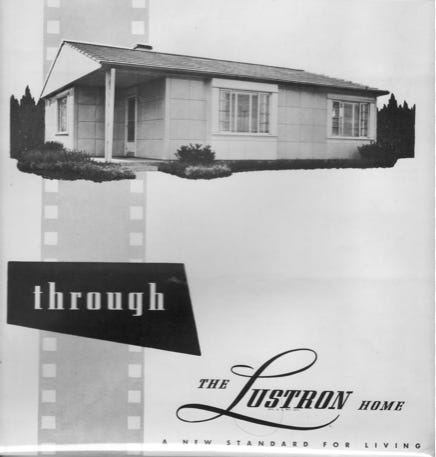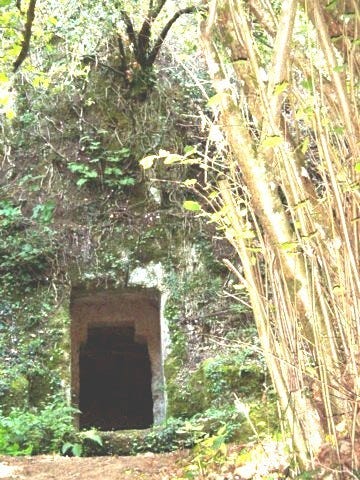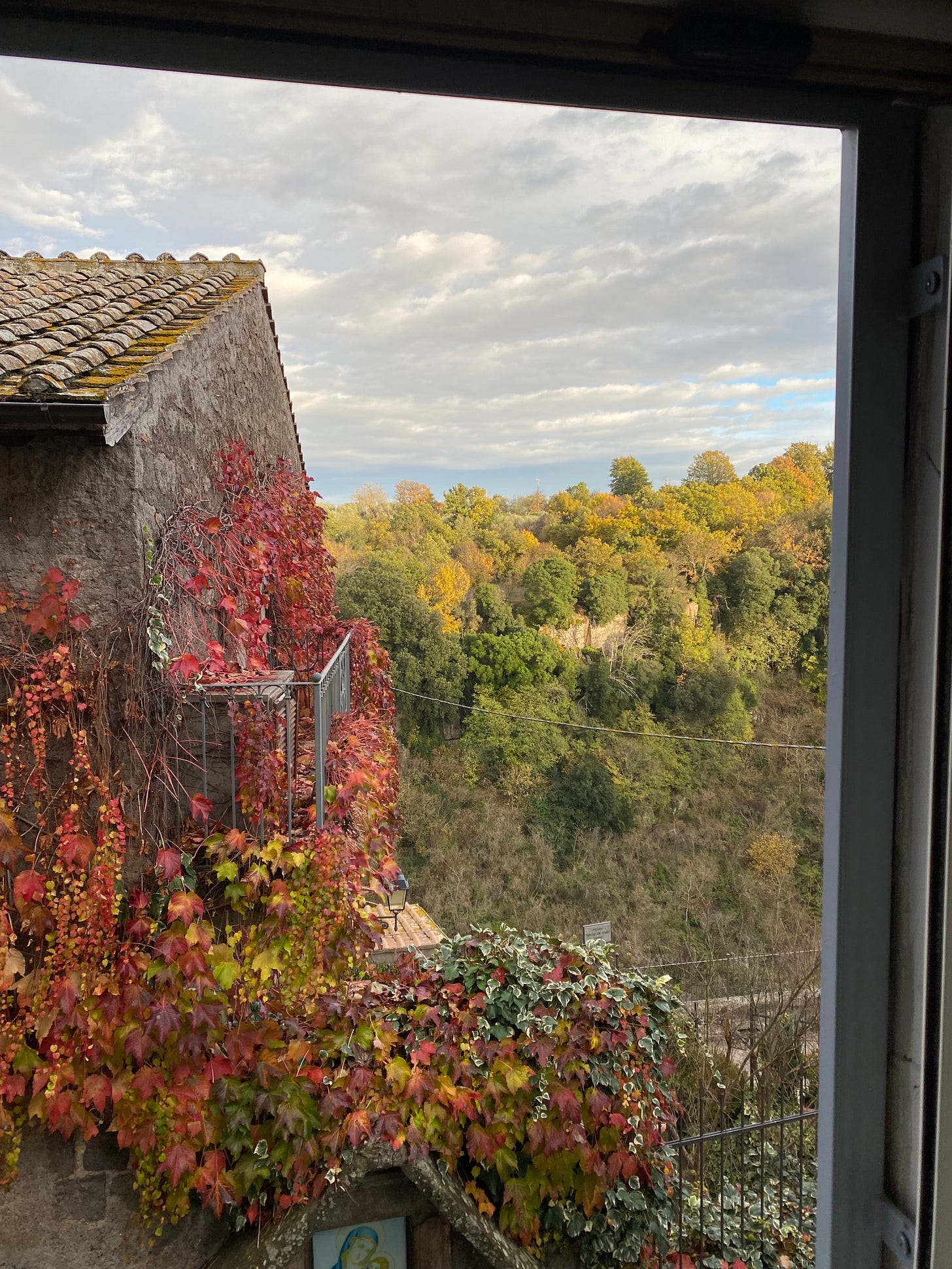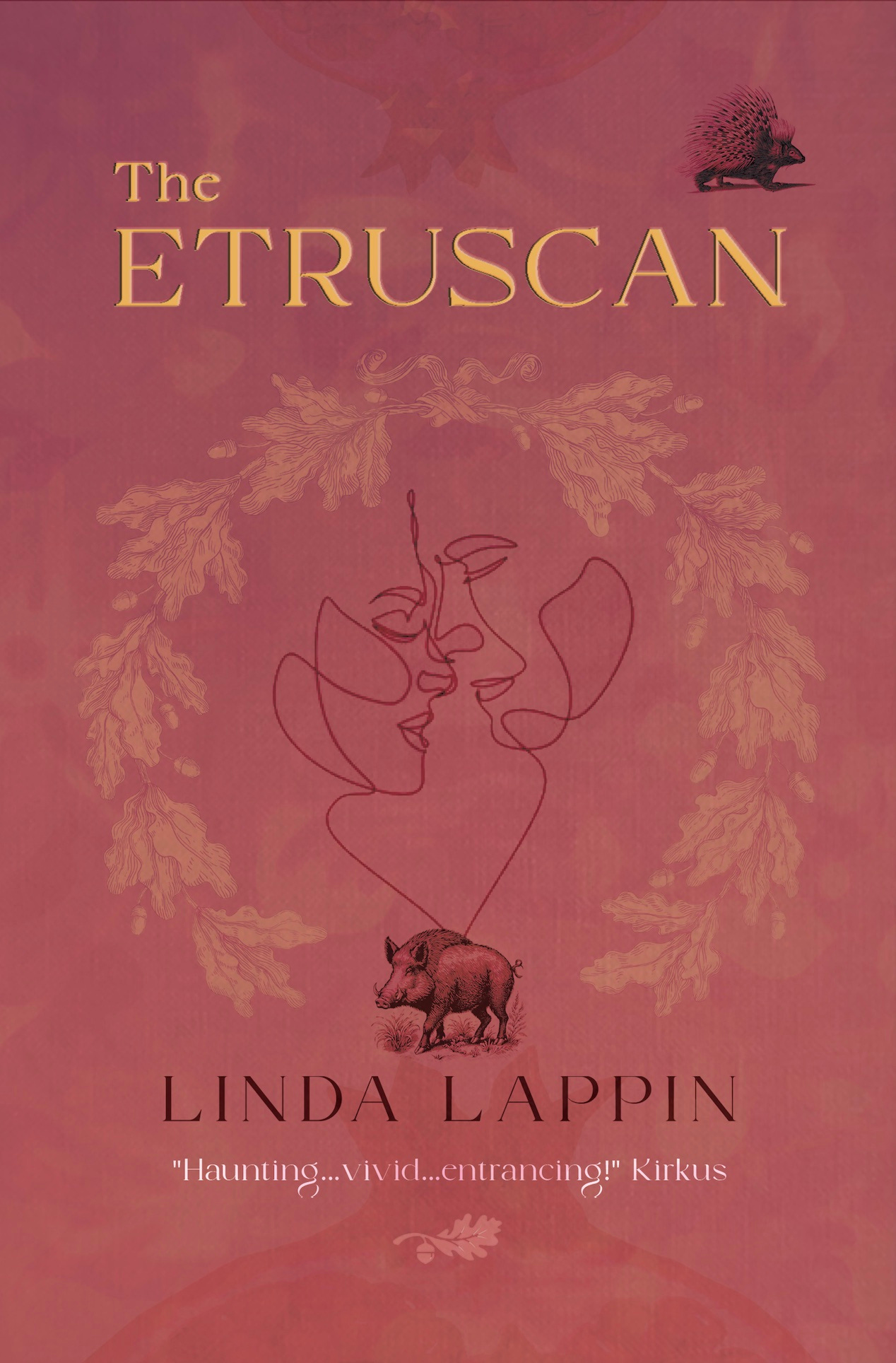A House Where Time is Not
The Etruscan & Dreamers of Old Houses & a free audiobook
People sometimes ask me where I got the idea for my novel The Etruscan. The story was born from many influences coming together: rambles through the Tuscan woods near Siena, exploration of abandoned Etruscan ruins and tombs near Viterbo, critical studies of gothic novels, women’s fiction, accounts by women travelers of the early 20th century, and lastly a house I lived in for awhile on the outskirts of what was once an Etruscan settlement.
That house still looms large in my mind. The window of its study, where I sat reading and writing for hours, looked out towards a row of Etruscan tombs carved in cliffs above a cemetery where at night you could see red lamps twinkling on the graves. The floors were dark red brick, the exposed ceiling beams blackened with age, so it was quite dark inside even in the daytime. To correct this defect, the owner had covered the walls with mirrors reflecting what little sunlight penetrated the north-facing windows. The mirrors had an odd way of multiplying the space, creating images of rooms within rooms, which I found quite intriguing. Built in the 19th century, it was probably the oldest house I had ever lived in---until then.
Without phone, TV, internet, or cell service, one could feel quite cut off at times. I wouldn’t say the house was full of ghosts as I never had any ghostly experiences there. But it did have a personality and a presence of its own. I soon found that the atmosphere enlivened my dreams. Friends and family staying overnight also reported unsettling dreams of tunnels, subways, cellars, caverns – all symbols of the Underworld—the realm of the Etruscan gods and of the unconscious from which our dreams and creativity spring. So in a way, you might say the house dreamed to me part of the story of The Etruscan.
In The Poetics of Space, French philosopher Gaston Bachelard argues that we carry the subliminal memory of our first home, the first physical space we inhabited, embedded in a series of buried sensations – the cold touch of a brass door knob, the creaking of stairs we laboriously climbed on short, unsteady legs. Proust famously applied this theory in the Overture of Swann’s Way: a random experience in the present –tasting a madeleine—unleashed a flood of recall. Bachelard claims that those early impressions of our first home knit together into one great image: an archetype of the ideal house that inhabits and haunts us for the rest of our lives. One aspect of that ideal space is that it is conducive to daydreaming, and thus, to the writing of poetry. To that I’d add, the making of stories.
Looking back on my own past, I am a bit puzzled. Nothing was more unpoetic than the first house I lived in between the ages of two and six: an anonymous steel box, manufactured in the early fifties by the Lustron company, to meet the housing shortage for GI’s returning from the war. Our house stood on a treeless street alongside a dozen “normal houses” built of wood, sticking out like a sore thumb. The whole house was pale grey, inside and out: the walls, doors, cupboards, closets, shelves– all made out of enamel-covered steel, all cool to the touch and to the eye. Everything was new but nothing worked properly. Sliding doors and drawers jammed; Venetian blinds stuck together; handles fell off when you cranked a window shut. The house had never been lived in before. It had only one floor, no cellar, and it seemed to be missing a soul.

Not far from the supermarket where my mother did the shopping was an old, rundown house in mock Tudor style. Whenever I went to the store with my mother, I demanded to be driven past that house. We’d pull over to the curb and I would sit there for a few moments in bliss, just taking it in: the dark wood facade, the exposed beams, the dizzily sloping roof, a bit like a witch’s hat. Right then, I made up my mind: someday I would live in an old house with a soul. At the age of four, I had already become a dreamer of houses. A house is, after all, an icon of the self.
Perhaps that’s why I am sitting here now, almost 70 years later, in a stone house built in the 14th century – under a massive ceiling beam that extends the whole width of the house and pokes out the external wall on the other side. The kitchen window faces east over the gorge where a turbulence of red, green and yellow swirls up from below, as a sharp September wind agitates the trees. The gaping holes beneath those leaves were carved by the Etruscans. It’s a landscape that lures you into daydreams, as Harriet, the main character of The Etruscan, discovers.
In my novel, Harriet, a photographer, has come to Italy to capture images of Etruscan sites in a rather obscure area not far from Rome in 1922. Her first problem is to find a place to live, and after a fruitless search for a house to rent, she stumbles upon the solution. Harriet writes:
It was not quite twilight. The sky was deepening to a coppery blue, there was a sting of rawness in the air. In the open cart, I pulled my cloak tighter round my throat. I still wasn’t over my cold. We drove up outside a house set back about twenty yards from the road…Stalwart and square, three stories high, it was built of grey stone with a slanting red-tiled roof. On the middle floor gleamed two darkened windows, like two little eyes. On the top floor, a small round window, like a third eye in the center of its forehead, reflected the pinkish wisps of sunset…
I examined the house in the fading light. It looked uninhabited, if not abandoned. It was exactly the sort of place I had been looking for: an entity not a mere soulless habitation. It had an energy that attracted me strongly. I surveyed the surrounding countryside: low lying fields, a row of oaks dotted on a distant ridge, a tower beyond the bare hills…
Later, Harriet, discovering the magical effects of the mirrors reflecting the view from the windows throughout the house – exclaims “This was a house where time is not – and I knew I must have it at all costs!” By the end of the day, she has the keys in hand.
A new house, says Frances Mayes, another dreamer of houses, is simply a new life. Place is fate, Mayes writes, and so it is for Harriet. The tower Harriet can see from her window is the home of Count Federigo del Re, whom she has not yet met — the man who will unravel her life. Nemesis or animus, conman or noble lover, ghost or simply the product of her imagination?
Critics claim that The Etruscan “gothic in the grand style, psychologically acute” — is “reminiscent of John Fowles’ The Magus”.
Now available for the first time in paperback & on all ebook platforms.
Amazon Paperback
BN Paperback
As a bonus for readers today, I am including here an audio book – a reading from Harriet’s diary in The Etruscan.
If you enjoy this post, do comment and share with others. And if you read The Etruscan or listen to the reading, consider leaving a review or a comment. Thank you.





This is so fascinating. I love how haunting it feels!
Linda, this is a great piece. I love the description of the house you lived in by the Etruscan tombs. What a wonderful, inspiring place. Thanks for your beautiful work. Teresa